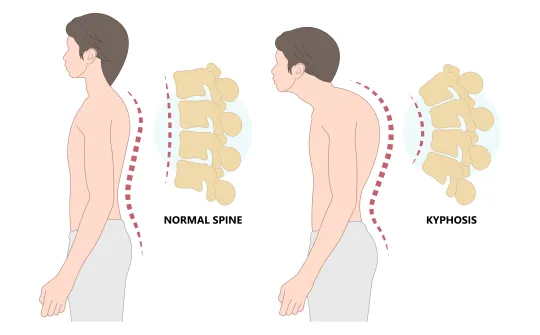
Minimally Invasive
Balloon Kyphoplasty
Minimally Invasive Balloon Kyphoplasty Can Repair Vertebral Fractures
At Orthopedic Specialists of Austin, we offer minimally invasive balloon kyphoplasty, which can address spinal deformities and relieve the pain associated with vertical compression fractures.
During this procedure, your doctor will use a small balloon to lift bone fragments into their correct positions. Then, after removing the balloon, he can inject cement into the newly formed cavity. As it hardens, this material will relieve pain and help prevent future compression and discomfort.

The Benefits of Kyphoplasty
Kyphoplasty can be immensely effective in relieving fracture-related back pain. Along with greater physical comfort, you could also enjoy increased mobility, a better mood, and an overall greater quality of life. The procedure is most successful when it takes place soon after a fracture. Nonetheless, it can also be effective if you have severe or long-term damage.
In fact, one study showed that kyphoplasty can reduce dependence on pain medication as 68 percent of patients reported complete pain relief after one week and 86 percent after three to six months. Furthermore, unlike other types of spine surgery, balloon kyphoplasty can also correct your posture and restore your natural height.
68%
86%
Frequently Asked
Questions
Am I a Candidate for Kyphoplasty?
If you have suffered spinal compression fractures due to osteoporosis, cancer, or related health problems, you may experience tremendous and even debilitating discomfort. Dr. Josey or Dr. Moghimi will evaluate your spine using x-rays, magnetic resonance imaging (MRI), and computed tomography (CT) scans. With these detailed images, they can determine whether kyphoplasty is the most appropriate treatment for you.
The procedure is suitable for most patients struggling with painful vertebral compression fractures. However, you may not be a candidate if you suffer from a bleeding disorder, bone infection, spinal tumors, or similar issues.
How Does Balloon Kyphoplasty Work?
Kyphoplasty may take place under local or general anesthesia. This procedure can be performed as an outpatient procedure, or you may need to spend up to 24 hours in the hospital for observation. These considerations will depend on your overall health and the number of fractures being treated.
During the procedure itself, you will lay on stomach. Your surgeon will use a small, hollow cannula to create a space in your damaged vertebra. Into this opening, he can insert a tiny balloon, inflating it once it is in place. As it expands, the balloon will lift the pieces of your fractured vertebra to the appropriate height. Then your doctor can remove the balloon. He will fill the now hollow cavity with orthopedic cement to keep the bone from collapsing again. You will remain laying down until the cement has a dried, a process that typically only takes minutes The procedure typically takes about one hour per vertebra.
What is recovery like?
The recovery period after balloon kyphoplasty is relatively quick. Most patients can return to work, household activities, and most of your normal routine immediately after the surgery. However, you should avoid strenuous exercise, especially heavy lifting for about six weeks. Like many patients, you may notice immediate pain reduction following kyphoplasty. In other cases, it may be a day or two before you see any change.
What are the risks?
Because balloon kyphoplasty is minimally invasive, the procedure is very safe. Of course, like all surgeries, some risks are involved. One of the biggest concerns is cement leakage, which can damage nearby nerves. The material could also migrate into your blood stream, causing blood clots or pulmonary embolism. Other risks include allergic reaction, heart attack, and stroke. Fortunately, these complications are extremely unlikely, thanks to the expertise of our fellowship-trained spine specialists.
Our Locations
At our Austin, TX, practice, our spine surgeons, Dr. Robert Josey and Dr. Michael Moghimi, have extensive experience with this treatment. Therefore, kyphoplasty will involve minimal risks. At the same time, it can help you enjoy a dramatically improved quality of life.
